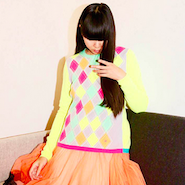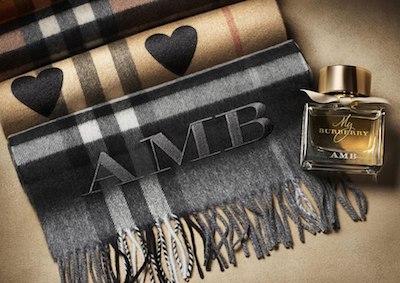 Suzana Lau of Susie Bubble for Pringle Deconstructed
Suzana Lau of Susie Bubble for Pringle Deconstructed
Digital has democratized customization, making bespoke services that were once reserved for only the top clients of the large brands accessible to more labels and consumers. Via ecommerce platforms, consumers can now play designer, as brands enable them to select everything from embellishments, such as monograms, to the color and fabrication of the fashion item itself. Fashionbi's "Personalization In Fashion" report delves into the rise of the personalization trend and customization’s role as a luxury brand differentiator.
"[Democratising personalization] will only increase the customer loyalty towards them," said Ambika Zutshi, CEO of Fashionbi, Milan.
"Today, the new luxury is keeping the consumer connected and integrate in the brand's world, its experience," she said. "Giving audience a possibility to be their own designers yet have a luxury trademark on their products could be a feeling unmatchable, especially for the millennials who are constantly changing brands looking to create that complete well-suited signature look, unique to themselves.
"Imagine creating your own Jimmy Choo wedding heels with the special date engraved on it or crating your own special bracelet where each charm holds a deep meaning to you - now this is something certainly more special than a normal footwear. Of course, then, the brand can put limits if and where needed, so it is a 'win-win' on both sides."
Personal touch One of the most common personalization offers is the monogram. It is also the easiest customization program, as it revolves around altering a completed product, rather than using consumers’ input for production. For instance, Burberry allows customers to place their initials on scarves and select bottles of fragrances, and it recently opened the service up for its iconic trench coats. Burberry initialed products
Many luxury brands offer monogramming as a service across the majority of their product selection. Smythson’s leather journals and handbags can be stamped with a name in gold lettering, creating a product unique to the individual, while a number of Tiffany & Co.’s products can be hand engraved with initials.
Monogramming has extended beyond the human touch, with Ralph Lauren selling monogram-ready sweaters for dogs, with the lettering included as a complimentary service.
The next level of customization allows consumers to tweak a specific part of an item to make it their own.
For instance, Fendi rolled out a collection of handbags, in which the customer can personalize the strap. Taking inspiration from the watch industry, Fendi Strap You can be fixed to a number of the label’s iconic handbag styles such, furthering a woman’s ability to make a personal statement with her bag of choice, from the shape to the handle (see story).
Fendi Strap You
Going beyond a simple tweak, some brands let consumers flex their design muscle, allowing clients to have a say in the overall look of a product.
#MyDiorSoReal, available in select countries in Europe, lets consumers build a pair of sunglasses to their specifications, selecting the type of lens and color of various parts of the frame. Since these are built from scratch for each consumer, the sunglasses take four to six weeks for delivery (see story).
Longchamp similarly launched a personalization program for the 20th anniversary of its Le Pliage tote, in which consumers could create their own design by selecting the colors for each part of the bag. Pringle of Scotland feted its 200th year with the creation of a completely custom sweater platform, Pringle Deconstructed, enabling consumers to reflect their personal style.
Burberry initialed products
Many luxury brands offer monogramming as a service across the majority of their product selection. Smythson’s leather journals and handbags can be stamped with a name in gold lettering, creating a product unique to the individual, while a number of Tiffany & Co.’s products can be hand engraved with initials.
Monogramming has extended beyond the human touch, with Ralph Lauren selling monogram-ready sweaters for dogs, with the lettering included as a complimentary service.
The next level of customization allows consumers to tweak a specific part of an item to make it their own.
For instance, Fendi rolled out a collection of handbags, in which the customer can personalize the strap. Taking inspiration from the watch industry, Fendi Strap You can be fixed to a number of the label’s iconic handbag styles such, furthering a woman’s ability to make a personal statement with her bag of choice, from the shape to the handle (see story).
Fendi Strap You
Going beyond a simple tweak, some brands let consumers flex their design muscle, allowing clients to have a say in the overall look of a product.
#MyDiorSoReal, available in select countries in Europe, lets consumers build a pair of sunglasses to their specifications, selecting the type of lens and color of various parts of the frame. Since these are built from scratch for each consumer, the sunglasses take four to six weeks for delivery (see story).
Longchamp similarly launched a personalization program for the 20th anniversary of its Le Pliage tote, in which consumers could create their own design by selecting the colors for each part of the bag. Pringle of Scotland feted its 200th year with the creation of a completely custom sweater platform, Pringle Deconstructed, enabling consumers to reflect their personal style.
 Longchamp's Le Pliage personalized
Looking back to the days of bespoke cobbling, Jimmy Choo’s made-to-order collection allows clients to select their ideal style, fabrication and heel height. Adding an additional personalized touch, consumers can have initials or characters stamped on the sole (see story).
Fashionbi found that personalization is more apt to be limited to the United States and Europe, where clientele tends to be more mature. This likely stems from the belief that while an American may invest time or money into engraving or monogramming, the emerging luxury consumer is more likely to be content with the standard product.
With today’s globalization, limiting customization to certain regions can alienate those excluded, and brands should consider making these offers more inclusive internationally. As consumers' luxury tastes become more sophisticated, they move away from labels, favoring items that make a personal statement rather than those that simply serve as status symbols.
Customized communication
When building a customization platform, Fashionbi suggests making it mobile accessible. With more consumers researching and buying from their phones and tablets, ignoring the channel is an ineffective strategy.
Another good practice is having a sophisticated preview in place, so the shopper can see what her design or monogram will look like before she buys. This is especially important, as personalized goods are often final sale.
Brands often promote the customization service right at launch, but then mentions of personalization offers drop after a few days. An outlier is Burberry, which kept up conversation about its Scarf Bar from its launch in September 2015 to press time, ramping up mentions during the holiday season.
Aside from marketing on social media, brands can boost interest and attention for personalized merchandise with optimized Web site placement. Rather than burying the service, they can create an option in the navigation menu.
Since the process of personalizing is often more complicated than a basic ecommerce purchase, it can also help to offer tutorials to guide consumers through the steps.
Longchamp's Le Pliage personalized
Looking back to the days of bespoke cobbling, Jimmy Choo’s made-to-order collection allows clients to select their ideal style, fabrication and heel height. Adding an additional personalized touch, consumers can have initials or characters stamped on the sole (see story).
Fashionbi found that personalization is more apt to be limited to the United States and Europe, where clientele tends to be more mature. This likely stems from the belief that while an American may invest time or money into engraving or monogramming, the emerging luxury consumer is more likely to be content with the standard product.
With today’s globalization, limiting customization to certain regions can alienate those excluded, and brands should consider making these offers more inclusive internationally. As consumers' luxury tastes become more sophisticated, they move away from labels, favoring items that make a personal statement rather than those that simply serve as status symbols.
Customized communication
When building a customization platform, Fashionbi suggests making it mobile accessible. With more consumers researching and buying from their phones and tablets, ignoring the channel is an ineffective strategy.
Another good practice is having a sophisticated preview in place, so the shopper can see what her design or monogram will look like before she buys. This is especially important, as personalized goods are often final sale.
Brands often promote the customization service right at launch, but then mentions of personalization offers drop after a few days. An outlier is Burberry, which kept up conversation about its Scarf Bar from its launch in September 2015 to press time, ramping up mentions during the holiday season.
Aside from marketing on social media, brands can boost interest and attention for personalized merchandise with optimized Web site placement. Rather than burying the service, they can create an option in the navigation menu.
Since the process of personalizing is often more complicated than a basic ecommerce purchase, it can also help to offer tutorials to guide consumers through the steps.
"It is very important to draw a concrete plan first," Ms. Zutshi said.
She says brands should consider whether they want an online or offline launch and which markets they want to offer access. Other considerations include timing of launch, which products will be available and what limits they want to put on customizations.
Pricing of the service, whether offering it complimentary or for a fee, shipping and return policies should also be outlined. Last but certainly not least, brands should develop a strategy for marketing their personalization platform, whether it is social media posts or a dedicated campaign."
Customization is poised to expand to more categories as consumers desire something that is uniquely their own, according the director of strategy at Fluid, Inc. Presenting at Luxury FirstLook: Strategy 2016 on Jan. 20, Chris Haines talked about the trend of co-creation, where consumers want to become their own designer and have a say in the look of the items they buy. Even with the advent of technology designed to help customize, the human element is still key in bespoke and personalized designs (see story)."Thanks to digitalization, the opportunities are immense," Ms. Zutshi said. "For one, a brand offering such service exclusively online has less to invest both in terms of time, physical space and product quantities. This 'saving,' in turn, can be used in other aspects like providing the same experience in mobile, offering more personalization options, quick shipments and after-sales services.
"Providing an easy-to-interact user experience is highly important as well; as we analyzed in our marketing research Personalization in Fashion the brands missed crucial points like no visible indication of this service on the Web site, no guidelines about the process steps, not showing a preview of the ready product and so on," she said. "Moreover, brands are also missing the point about promoting such a tempting offer every now and then, which is quiet a botch on their part."
